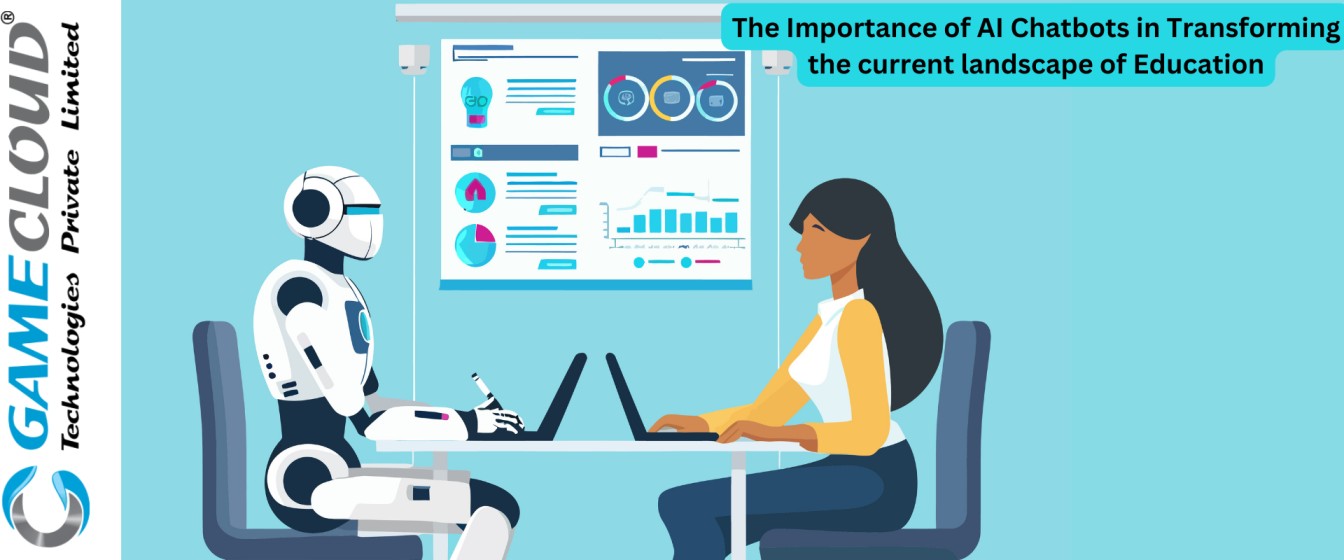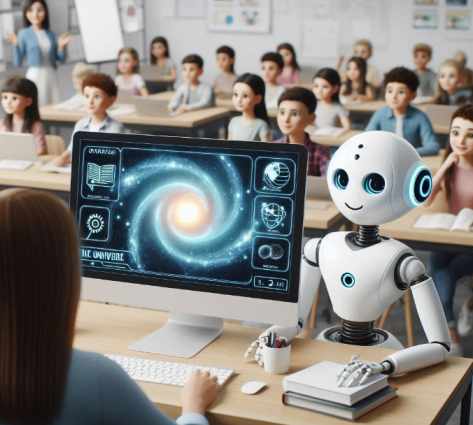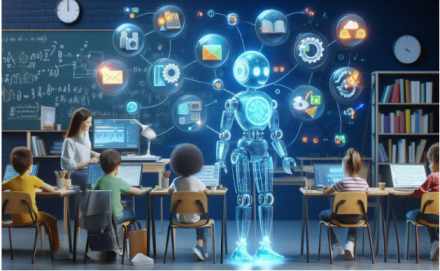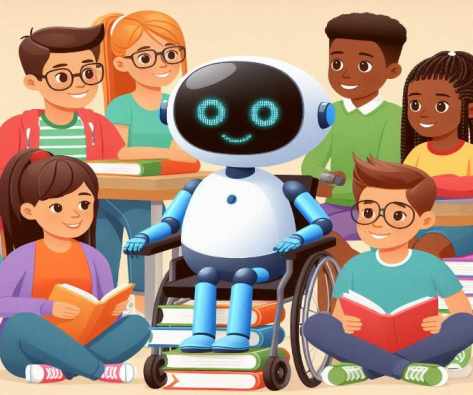
The traditional education system faces numerous challenges, including overcrowded classrooms, lack of personalized attention for students, varying learning paces and styles, and the struggle to keep up with the fast-paced evolution of technology and information. As the educational landscape continues to evolve, the rise of AI-powered chatbots emerges as a promising solution to effectively address some of these issues. This blog aims to explore the significance of AI chatbots in transforming the current landscape of education, highlighting their benefits, challenges, and future prospects.
Current Landscape of Education
The current education system is plagued by several issues, including:
- Overcrowded Classrooms: Traditional classrooms often struggle to accommodate the diverse needs of students, leading to a lack of personalized attention and a one-size-fits-all approach to learning.
- Limited Resources: Educational institutions often face budget constraints, limiting their ability to invest in cutting-edge technology and innovative teaching methods.
- Teacher Workload: Teachers are often overwhelmed with administrative tasks, leaving them with limited time to focus on teaching and student engagement.
- Student Engagement: Students often struggle to stay engaged in the learning process, leading to decreased motivation and academic performance.
Role of AI Chatbots in Education
AI chatbots have the potential to revolutionize the education sector by addressing various challenges and providing a more personalized, efficient, and engaging learning experience. These intelligent systems can adapt to individual students’ learning styles, pace, and needs, offering a tailored educational experience that caters to diverse learning preferences.
- Personalized Learning Experiences
They can provide personalized learning experiences by:
- Adapting to Learning Styles: They can identify students’ learning styles and adjust their teaching methods accordingly. For instance, a chatbot might use visual aids for students who learn better through images or provide audio explanations for those who prefer auditory learning.
- Pacing and Needs: They can assess students’ learning pace and adjust their content to match their individual needs. This ensures that students are not left behind or overwhelmed by the material.
- Interactive Exercises: They can include interactive exercises, such as quizzes, games, and multimedia content, to keep students engaged and motivated.
- Multimedia Content: They can provide multimedia content, such as videos, images, and animations, to enhance the learning experience and cater to different learning styles.
- Recommended Reading: They can recommend relevant reading materials based on students’ interests and learning objectives, encouraging them to explore topics beyond the classroom.

- Automated Administrative Tasks
AI chatbots can assist teachers with administrative tasks, freeing up time for more important activities like teaching and student engagement. Some examples of automated administrative tasks include:
- Scheduling: They can schedule appointments, meetings, and events, reducing the workload of teachers and administrative staff.
- Grading and Feedback: They can automate grading and feedback processes, providing instant feedback to students and reducing the workload of teachers.
- Information Provision: They can provide information to students, such as course schedules, assignments, and deadlines, reducing the need for teachers to handle these tasks.
- Student Support: They can offer support services, such as counseling and academic advising, to students, freeing up the time of teachers and counselors.
- Real-time Feedback
AI chatbots can provide instant feedback to students, helping them track their progress and stay motivated. This real-time feedback can be in the form of:
- Instant Grading: They can provide instant grading and feedback on assignments and quizzes, allowing students to track their progress and adjust their learning strategies accordingly.
- Personalized Recommendations: They can offer personalized recommendations based on students’ strengths, weaknesses, and learning objectives, helping them stay on track and achieve their goals.
- Adaptive Difficulty: They can adjust the difficulty level of assignments and quizzes based on students’ performance, ensuring that they are challenged but not overwhelmed.
- Scaffolding: They can provide scaffolding questions to help students build upon their knowledge and understanding, gradually increasing the difficulty level as they progress.
- Error Detection and Correction: They can detect errors in student responses and provide corrections, helping students identify and correct mistakes.
- Self-Assessment: They can encourage students to reflect on their own learning and assess their own understanding, promoting self-directed learning and metacognition.
- Peer Review: They can facilitate peer review by matching students with similar learning objectives and providing feedback on each other’s work.

- Enhanced Student Engagement
AI chatbots can engage students in real-time conversations, making learning more interactive and enjoyable. Some ways these can enhance student engagement include:
- Conversational Dialogue: They can engage students in conversational dialogue, simulating a human-like interaction that encourages students to participate and ask questions.
- Gamification: They can incorporate game-like elements, such as rewards, leaderboards, and challenges, to make learning more enjoyable and competitive.
- Multimedia Content: They can provide multimedia content, such as videos, images, and animations, to enhance the learning experience and cater to different learning styles.
- Real-time Updates: They can provide real-time updates on assignments, quizzes, and other learning materials, keeping students informed and motivated.
AI chatbots have the potential to revolutionize the education sector by providing personalized learning experiences, automating administrative tasks, offering real-time feedback, and enhancing student engagement. By leveraging the capabilities of them, educators can create a more efficient, effective, and enjoyable learning environment that caters to the diverse needs of students.

Benefits of using AI Chatbots in Education
AI chatbots have numerous benefits in the education sector, transforming the learning experience by providing personalized support, enhancing engagement, and streamlining administrative tasks. Some of the key advantages include:
- Enhanced Student Engagement: They can engage students in real-time conversations, making learning more interactive and enjoyable.
- Accessibility Support: They can offer text-to-speech capabilities, provide visual descriptions, and assist with reading and writing tasks, ensuring that education is accessible to all students, including those with disabilities.
- Language Learning and Multilingual Support: They are valuable tools for language learners, engaging in conversations, correcting pronunciation, and offering grammar tips, as well as providing multilingual support to students from diverse linguistic backgrounds.
- Analytics and Insights: They collect data on student interactions and performance, providing educators with valuable insights into student behavior and learning patterns, informing instructional design and helping educators tailor their teaching strategies.
- Reduced Student Dropout Rates: These bots can identify students at risk of dropping out based on their interactions and performance, allowing educators to intervene and provide timely support.
- Keeping Up with Technological Advancements: Educational institutions that integrate them stay ahead of the curve, preparing students for a future where technology plays a pivotal role in various professions and industries.
- Enhanced Parent-Teacher Communication: They can improve communication between parents and teachers, providing updates on students’ progress, attendance, and behavior, ensuring that parents are actively involved in their child’s education.
These benefits demonstrate the significant potential of them in transforming the education sector, offering a more personalized, efficient, and engaging learning experience for students.
How do AI chatbots provide feedback on student behavior or conduct?
By utilizing AI chatbots to monitor and provide feedback on student behavior and conduct, educational institutions can create a more positive and supportive learning environment, while also ensuring that students are held accountable for their actions and provided with the resources they need to succeed. They can provide feedback on student behavior or conduct in several ways:
- Monitoring Student Interactions: They can monitor student interactions in real-time and identify any concerning patterns or behaviors, such as excessive absences, late assignments, or inappropriate language.
- Connecting Students with Resources: They can connect students with relevant campus resources, such as counseling services or student conduct offices, based on the nature of the behavioral or conduct issues identified.
- Reporting to Educators: They can provide educators with detailed reports on student behavior and conduct, allowing them to intervene and provide additional support or disciplinary measures if necessary.
- Encouraging Positive Behavior: They can also be used to encourage positive student behavior by providing praise and recognition for good conduct, such as attending classes regularly, participating in discussions, or completing assignments on time.
Examples of AI Chatbots in Education
Several educational institutions and organizations have already successfully implemented AI chatbots in their educational settings. Some notable examples include:
- Duolingo’s Chatbot for Language Learning: Duolingo’s chatbot uses AI-powered conversational dialogue to help users practice conversational skills in various languages.
- Georgia State University’s Pounce: Pounce is an AI-powered chatbot designed to assist students during the enrollment process, answering questions about admissions, financial aid, and registration.
- StudyPal: StudyPal is an AI chatbot that pairs students with study partners based on their learning preferences and schedules. It facilitates collaborative learning and peer support among students.
- CareerCounselor: CareerCounselor is another such bot that guides students in exploring potential career paths, providing information on job opportunities, required skills, and industry trends to help students make informed career decisions.
- GrammarGenius: GrammarGenius is a chatbot focused on improving students’ grammar and writing skills. It offers grammar exercises, writing tips, and feedback on written assignments to enhance students’ language proficiency.
Challenges and Limitations
The integration of AI chatbots into the education sector has the potential to revolutionize the way students learn and interact with educational institutions. However, this integration is not without its challenges and limitations. One of the significant concerns is data security. They require access to sensitive student data, which poses significant data security risks. Educational institutions must ensure that they have robust data protection measures in place to prevent unauthorized access to student data. This includes implementing encryption, secure authentication protocols, and regular security audits to identify and address vulnerabilities.
Another challenge is teacher resistance. Some teachers may resist the integration of them into their teaching practices, citing concerns about job security and the potential for AI to replace human teachers. This resistance can be mitigated by educating teachers about the benefits of them, such as freeing up time for more important tasks like teaching and student engagement, and providing training on how to effectively integrate them into their teaching practices.
Technical issues are also a significant challenge. They can be prone to technical issues, such as glitches and errors, which can disrupt the learning process. To mitigate this, educational institutions must invest in robust infrastructure and ensure that their bots are regularly updated and maintained. This includes implementing backup systems, conducting regular system checks, and having a plan in place for addressing technical issues quickly and efficiently.
In addition to these challenges, there are also limitations to the effectiveness of AI chatbots in education. For instance, they lack contextual understanding, which can lead to verbal nonsense and irrelevant responses. This limitation can be addressed by ongoing training and development of AI algorithms, integrating human oversight into AI chatbot systems, and educating students about the capabilities and limitations of them.
Furthermore, they lack emotional intelligence and interpersonal skills, which are essential for effective communication and student support. This limitation can be addressed by developing them that can understand and respond to emotional cues, and integrating human operators into those systems to provide emotional support and guidance.
Another limitation is the inability of AI chatbots to adapt to novel or unexpected questions that deviate from their programmed parameters. This limitation can be addressed by developing them that can learn from their interactions and adapt to new situations, and integrating human oversight into their systems to ensure that students receive accurate and relevant assistance.
Mitigation Strategies for these Challenges
Addressing the challenges associated with the integration of AI chatbots in education requires careful consideration and the implementation of effective mitigation strategies. Let’s delve into how these challenges can be addressed in great detail:
- For Data Security Concerns
Data security is a critical issue when implementing them in education due to the sensitive nature of student data. To address this challenge, educational institutions can:
- Implement Robust Data Protection Measures: Establish stringent data protection protocols, including encryption, secure authentication, and regular security audits to safeguard student data from unauthorized access.
- Compliance with Regulations: Ensure compliance with industry rules, regulations, and legislation governing data privacy to protect student information and maintain ethical standards in data handling.
- Ethical Use Framework: Develop and implement a framework to ensure the ethical use of them in education, outlining guidelines for data usage, course assessments, usage regulations, and effective detection tools to prevent misuse of student data.
- For Teacher Resistance
Teacher resistance to AI chatbots can hinder their effective integration into educational settings. Mitigation strategies include:
- Educational Initiatives: Educate teachers about the benefits of them, emphasizing how these tools can enhance teaching practices, provide personalized learning experiences, and free up time for more meaningful interactions with students.
- Training Programs: Offer training programs to teachers on how to effectively integrate them into their teaching practices, addressing concerns about job security and emphasizing the role of AI chatbots as supportive tools rather than replacements for human teachers.
- For Technical Issues
Technical issues, such as glitches and errors in AI chatbots, can disrupt the learning process. Mitigation strategies involve:
- Investing in Infrastructure: Ensure that educational institutions invest in robust infrastructure to support those systems, including backup systems, regular maintenance, and updates to prevent technical disruptions.
- Human Oversight: Integrate human oversight into those systems to address technical issues promptly, provide support to students in case of errors, and ensure a seamless learning experience.
- Continuous Improvement: Implement a system for continuous improvement of them, including regular updates, bug fixes, and enhancements to enhance functionality and minimize technical issues that may impact student learning.
By implementing these mitigation strategies, educational institutions can effectively address the challenges associated with them in education, ensuring a smooth integration of these innovative tools to enhance the learning experience for students and educators alike.
Future Trends and Predictions
As AI chatbots continue to evolve, we can expect to see even more innovative and impactful applications in the education sector. Some of the key trends and predictions include:
- Increased Adoption: They will become increasingly prevalent in educational institutions, as they offer a more efficient and effective way to deliver educational content. As the technology continues to advance, AI-powered educational chatbots are expected to become more sophisticated, capable of engaging in more natural and contextual conversations. This increased adoption will be driven by the numerous benefits that AI chatbots bring to the education sector, such as personalized learning experiences, automated administrative tasks, real-time feedback, and enhanced student engagement.
Educational institutions will increasingly recognize the value of them in improving teaching and learning outcomes, leading to a surge in their implementation across various levels of education, from primary schools to universities. As they become more user-friendly and accessible, they will appeal to a wider range of educators and students, further accelerating their adoption.
- Improved Data Analysis: They will be able to analyze vast amounts of data, providing educators with valuable insights into student learning patterns and preferences. As they interact with students, they will collect a wealth of data on student performance, engagement, and behavior. By leveraging advanced data analytics and machine learning algorithms, they will be able to identify trends, patterns, and correlations in this data, providing educators with actionable insights to improve teaching strategies and learning outcomes.
For example, they may identify students who are struggling with specific concepts or topics, allowing educators to provide targeted interventions and support. They may also detect patterns in student engagement, such as the times of day when students are most active or the types of content that generate the most interest, enabling educators to optimize their teaching approaches accordingly.
- Enhanced Student Experience: They will continue to enhance the student experience, providing personalized support and feedback, and making learning more engaging and enjoyable. As they become more advanced, they will be able to adapt to individual student preferences, learning styles, and needs, offering a truly personalized learning experience.
They will use machine learning to predict user needs and preferences, offering personalized recommendations and solutions tailored to each student’s unique requirements. They may suggest additional resources or activities based on a student’s interests and progress, keeping them engaged and motivated throughout their learning journey.
Moreover, they will incorporate gamification elements, such as interactive quizzes, challenges, and rewards, to make learning more fun and engaging for students. By making the learning process more interactive and enjoyable, they will help students stay focused, retain information better, and develop a love for learning.
Ankatmak’s Valuable Contribution Leading the Way
Ankatmak, a sub-brand of GameCloud Technologies Pvt Ltd, is a cutting-edge AI outsourcing company that specializes in AI-assisted content creation, custom AI solutions, and IT consultancy. With a team of 70+ dedicated professionals, Ankatmak is well-equipped to navigate clients through the complexities of the digital landscape, ensuring tailored, cutting-edge AI and IT consultancy. Ankatmak’s diverse engineering skills, AI-assisted content creation, and custom AI solutions align with the AI companies building a standard interface between language models and computers.
Conclusion
As AI Chatbots continue to evolve, we can expect to see a significant increase in their adoption in the education sector, driven by their ability to provide personalized learning experiences, automate administrative tasks, offer real-time feedback, and enhance student engagement. The improved data analysis capabilities of them will provide educators with valuable insights to optimize teaching strategies and learning outcomes. Furthermore, the enhanced student experience offered by them will make learning more engaging, enjoyable, and effective for students of all ages and backgrounds.
